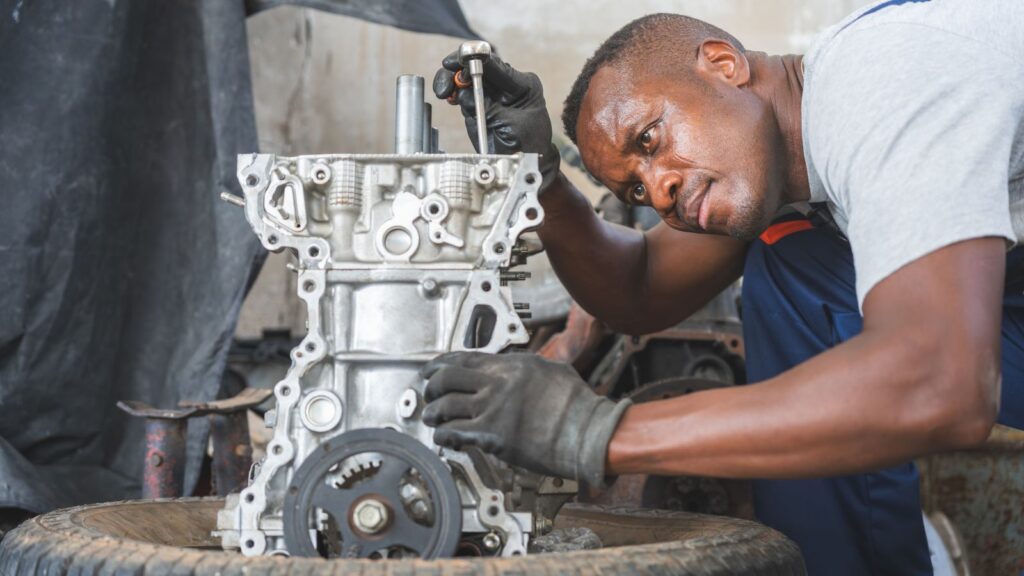
Road trips are fun until a warning light pops up and the car starts humming like a kazoo. You’re far from home, the clock is ticking, and your ride needs help. Here’s a fast, friendly guide that keeps stress low and your wheels rolling.
How to Find a Trustworthy Mechanic When Traveling
Start simple. Pull over somewhere safe and breathe. Open your Maps app and search for nearby auto repair. Sort by rating, but also check how many reviews there are. Ten five-star ratings say less than 400 four-star ones. Look for ASE or manufacturer certifications on shop profiles. Scan recent customer photos. Shops that post clear before-and-after shots usually run tight processes.
Call two or three places. Listen for straight answers on diagnostics, availability, and pricing basics. Ask about warranties on parts and labor. A shop that spells out coverage in plain language respects your time and budget. If your car brand is finicky, check the shop’s experience with your model line. Keep notes. You’ll compare options in five minutes flat.
Using Google and Yelp Reviews to Choose Local Auto Shops
Reviews reveal patterns. Sort by “Most recent.” A great shop last year might be under new management today. Read mid-range ratings first. Three- and four-star comments often explain trade-offs: speed vs. cost, or parts availability vs. scheduling.
Check owner responses. Calm, specific replies signal accountability. Look for mentions of digital inspections, photo reports, and text updates. Those tools reduce surprise bills. If a negative review cites the same issue many times—missed callbacks, sloppy estimates—consider it a red flag. Save a shortlist of two. Having a backup keeps leverage on your side.
Signs of a Reliable Auto Repair Shop to Look For
First glance matters. Clean counters. Organized bays. Service advisors who greet you, look up your plate, and ask for symptoms—not guesses. Clear signage for labor rates and diagnostic fees. Written estimates that break out parts, labor hours, shop supplies, and taxes. You want line items, not mystery bundles.
Ask to see the inspection summary. Many shops use tablets to create a color-coded report. Green means good, yellow means watch soon, red means fix now. You’re deciding with data, not vibes. If your inspection shows a crack or chip, you can easily find Windshield Replacement Mesa services while passing through Arizona.
Asking the Right Questions Before Approving Repairs
Good questions save money. Use this quick list at the counter or on the phone:
- What’s the diagnostic path, and why is it needed?
- Can you itemize parts, labor hours, fees, and taxes?
- Which items are safety-critical today, and which can wait?
- What warranty covers parts and labor, and for how long?
- Will you send photos or a video of the issue and the fix?
- What’s the estimated completion time, and how will you update me?
- Are aftermarket parts an option, and what trade-offs come with them?
Keep your tone friendly. You’re collaborating, not sparring. The goal is clarity before the first wrench turns.
Using Roadside Assistance and Insurance for Trusted Referrals
If you have AAA, your carmaker’s assistance plan, or credit card benefits, call them first. Networks often include vetted shops with standard guarantees. Tows may be cheaper (or even free) within a set mileage. Ask dispatch if they can place you with a shop that provides digital inspections and written warranties. That combo keeps surprises in check.
Insurance can help too, especially for glass, collision, or comprehensive claims. Carriers keep preferred vendor lists that meet pricing and quality criteria. If you’re traveling for work, check corporate travel support. Many programs include roadside and rental perks. Keep claim numbers, tow slips, and names of reps. Those details speed up refunds and follow-ups later.
Mobile Mechanic Services: A Safe and Convenient Choice
Sometimes the shop can come to you. Mobile techs handle batteries, starters, alternators, belts, sensors, and many maintenance jobs in a driveway or hotel lot. This saves time and towing. Confirm the service area, trip fee, and minimum charge. Ask for a written estimate before the visit begins.
Verify the business license and reviews. Confirm parts sources and the warranty policy. For safety, meet in a well-lit, public spot if possible. If you’re stuck on a highway shoulder, request a tow to a safer location first. Mobile service is a lifesaver for simple repairs. Bigger jobs still belong in a full bay with lifts and alignment tools.
Conclusion: Staying Confident and Safe with Car Repairs on the Road
Keep your process tight. Compare two options. Ask smart questions. Get photos and clear pricing. Save receipts and the inspection report for future reference. A calm plan beats panic every time. With a steady approach, you’ll get back on the road faster… and happier.
Travel breaks routines, but your repair playbook can stay steady. Keep these steps handy in your notes app, and share the link with a friend who road-trips like it’s a sport. Safe miles!

FAQs
How fast should I approve an estimate?
Move promptly, but only after you understand the diagnosis, parts list, warranty, and timeline. A five-minute review prevents hour-long headaches.
Is OEM always better than aftermarket?
It depends. OEM usually matches factory specs. Quality aftermarket can cut costs. Ask about brand, warranty, and any fitment notes. Choose the option that balances reliability and budget.
What if the problem returns a week later?
Call the shop immediately and reference the invoice number. Many repairs include labor coverage for a set period. The sooner you report it, the cleaner the fix.
Can I split the work into urgent and later items?
Yes. Separate safety fixes from maintenance and wear items. Tackle red items now and schedule yellow items for a later date. Clear staging protects both wallet and car.
Do I need to keep old parts?
If local rules allow, request them. Old parts help you verify the replacement and understand wear patterns. Snap photos if you don’t want to carry them around.




